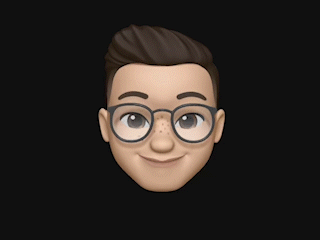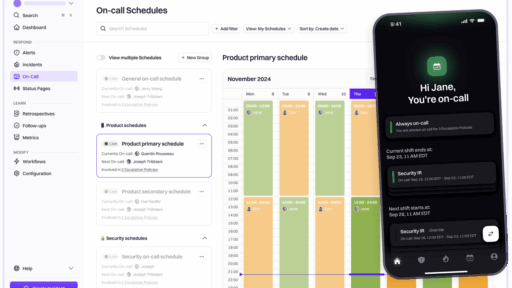So you’re scrolling through job postings and seeing “AI skills required” everywhere. Meanwhile, your design education probably covered typography and color theory, but nobody mentioned how to work with artificial intelligence.
The gap between what employers want and what most designers know is getting ridiculous. But here’s the opportunity – while everyone else is confused about AI, you can get certified and position yourself as the designer who actually gets this stuff.
Why AI Certification Actually Matters for Your Career
Traditional design school didn’t prepare us for this moment. Self-taught AI knowledge is messy and inconsistent. Employers need proof you can handle these tools professionally.
The numbers tell the story. LinkedIn’s research shows AI skills appear in 65% more design job postings than last year. Designers with verified AI competencies earn 23% higher salaries on average.
Now, some people argue this is just another software update – like learning Photoshop or Sketch back in the day. They think formal certification is overkill for what’s essentially a new tool in the toolbox.
The Certification Advantage
Getting certified gives you structured benefits:
- Clear learning path instead of random YouTube tutorials
- Industry-recognized credentials that hiring managers understand
- Access to professional communities and ongoing resources
- Updates as AI technology evolves (which happens constantly)
- Credibility that separates you from casual users
Showcasing AI Skills Without Losing Your Creative Identity
Every designer worries about this – how do you demonstrate AI proficiency without your work screaming “robot made this”? The fear of looking inauthentic or losing your personal style keeps many creatives awake at night.
Smart portfolio integration shows AI as an amplifier of your creativity, not a replacement for it. Document your decision-making process and highlight the human judgment that guides AI implementation.
Portfolio Best Practices
Effective AI portfolio integration follows these principles:
- Show your complete process, with AI as one component
- Compare traditional vs AI-assisted approaches side by side
- Highlight human decisions in tool selection and output refinement
- Include case studies demonstrating efficiency gains and creative exploration
- Display quality control measures for AI-generated elements
Smart portfolio integration demonstrates both technical competency and thoughtful creative direction. For more detailed guidance on building a standout design portfolio, check out our proven portfolio strategies that actually work in 2025 – it covers everything from project selection to presentation techniques that get you hired.
Career Advancement Through Strategic AI Positioning
Designers who embrace AI literacy aren’t just getting hired faster – they’re advancing to leadership roles more quickly. Companies desperately need creative professionals who can bridge artistic vision with AI implementation strategies.
CNBC’s workforce analysis reveals that businesses actively seek design leaders who understand both creative excellence and AI integration.
Building Your Strategic Position
Smart career positioning involves three core areas:
- Developing AI literacy alongside existing design expertise
- Building leadership skills in AI tool adoption and team training
- Creating systems for organization-wide AI education and implementation
This combination positions you as the go-to person for AI-related questions and strategic decisions. Looking to understand how small teams can leverage AI for competitive advantage? Our article on why small design teams actually move faster with AI shows practical strategies for team leadership and AI implementation.
Design Systems Automation That Actually Works
Manual design system maintenance feels like painting during an earthquake – everything changes before you finish updating documentation. AI-powered automation transforms this chaotic process into something manageable and scalable.
Senior designers and design leaders get excited about this because it solves real organizational pain points. Understanding both traditional design system principles and AI implementation capabilities makes you invaluable. Want to dive deeper into optimizing your design workflow? Read about Figma AI features that eliminate 80% of design busywork to see how AI tools are already transforming daily design tasks.
AI-Powered Design System Benefits
Automated systems deliver measurable advantages:
- Consistent component generation across multiple platforms and devices
- Automated accessibility compliance checking and reporting
- Intelligent version control and change management workflows
- Predictive maintenance alerts for deprecated elements
- Self-updating documentation that stays current with system changes
Organizations implementing these systems report up to 70% reduction in manual maintenance tasks.
AI Accessibility Tools and Inclusive Design Implementation
The intersection of AI technology and accessibility creates massive opportunities for designers who understand both domains. Microsoft and other major platforms are rapidly expanding AI-powered accessibility features.
Most professionals understand either accessibility principles OR AI implementation, but rarely both. Bridging this knowledge gap makes you incredibly valuable in today’s market. For insights into how AI is impacting UX research specifically, check out why UX researchers are either going all-in on AI or running away screaming – understanding these perspectives helps you position yourself strategically.
Practical AI Accessibility Implementation
Real-world application includes these capabilities:
- AI-generated alt text with human oversight and refinement processes
- Automated color contrast optimization with intelligent suggestions
- Screen reader compatibility testing through AI simulation tools
- Cognitive accessibility assessment via machine learning analysis
- Multi-language accessibility support with automated localization
Designers with dual expertise become essential team members for inclusive product development.
Choosing the Right AI Certification Program
Starting your AI literacy journey requires careful program selection. The quality and recognition of your certification significantly impacts career outcomes and learning effectiveness.
Focus on programs offering comprehensive coverage of design-specific AI applications. Prioritize certifications with hands-on projects, peer collaboration opportunities, and ongoing educational support.
Program Evaluation Criteria
Assess potential certifications based on these factors:
- Industry recognition and employer acceptance rates
- Curriculum relevance to practical design applications
- Portfolio development requirements and project quality
- Ongoing education and recertification pathways
- Community access and professional networking opportunities
Thorough research ensures your investment delivers genuine career advancement value.
Your Next Steps in AI-Driven Design Excellence
AI literacy certification represents more than skill development – it demonstrates adaptability and forward-thinking to employers. Certified professionals often become internal champions for AI adoption across their organizations.
The design industry continues evolving at breakneck speed. Professionals with verified AI competencies position themselves advantageously for emerging opportunities and leadership roles.
Ready to accelerate your design career with AI skills? Start with our complete collection of design career resources for step-by-step guides on portfolio development, skill advancement, and industry navigation. Don’t forget to bookmark our portfolio strategy guide that reveals why most career advice about portfolios is wrong – it’s essential reading for anyone serious about career advancement.
Remember this fundamental truth: AI amplifies human creativity rather than replacing it. Certified AI literacy ensures you harness these powerful capabilities while maintaining the creative vision that defines exceptional design work.






